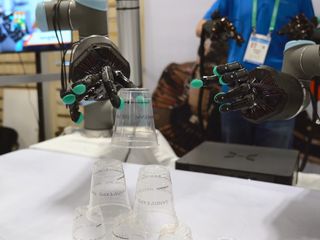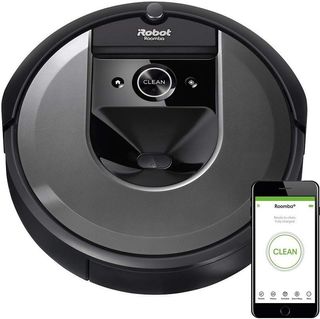iRobot pioneered the robot vacuum, now it's working on washing your dishes

What you need to know
- iRobot is working on robots with arms that can do more household chores than ever.
- Products are expected in the next five years and include advanced navigation and object identification via cameras.
- The first robot with next-generation navigation will debut this year and will mow your lawn for you.
If you own a robot vacuum, you know how much nicer life is now that you don't have to vacuum your home every day (or ever, really). But the company that pioneered robot vacuums two decades ago isn't stopping there. Bloomberg conducted an interview at CES 2020 with iRobot's Chief Executive Officer, Colin Angle, and discussed the future of household robots that will be introduced in the very near future. The answer was something more akin to The Jetsons' Rosie the Robot Maid than a little disc that roams around your home and sucks up dirt. We reached out to iRobot for a statement and the company had this to say:
iRobot has a long history of pushing the boundaries of robotics and developing innovative manipulation technologies, including arms. New technologies that provide robots with spatial context, including the maps that help our consumer robots navigate, will eventually help open the door to a new generation of home robots with arms as there are a multitude of practical, at-home tasks that could be addressed. In order for this to happen, though, the robot needs to know where it is and where things are within the home.Folding laundry, doing the dishes, delivering a meal and grabbing a drink from the refrigerator are just some examples of potential applications. While it's exciting to think about the potential for robots to continue improving our overall quality of life inside and outside of the home over the coming years, our practice is to refrain from sharing specific details about our product development plans, roadmaps and timetables.
iRobot's robotic arms were originally developed for the military branch of the company, which was sold in 2016. During the sale, iRobot opted to keep its arm tech for consumer product use, and now it's able to bridge what has been learned about robot vision and movement through its latest Roombas to create compelling new products for various household tasks. This also helps explain why iRobot has been so adamant about sticking with using cameras on its robot vacuums instead of utilizing laser-guided navigation, as many of iRobot's competitors have adopted over the years.
These are the best robot vacuums
It's becoming clear just why cameras have been needed in iRobot's household robots for the past few years, and now it's using the data and experience generated through those efforts to develop the next-level in household robot computing. Machine learning, AI, computer vision, and mapping algorithms like SLAM (simultaneous location and mapping) are all important to the next generation of robots, which iRobot is looking to ship in the next five years. It's already begun to integrate with other smart home gadgets and companies and, while it's not quite a reality yet, could use these sorts of integrations to better help your new household robot understand your home's layouts and needs, including daily chores.
Terra, a robotic lawnmower, is kicking off the first next-generation robot from the company, and it's happening this year. Terra has been under development for several years, and the company has been a bit reclusive with details since the original unveiling some time ago. That goes pretty well in line with iRobot's mantra of not sharing specific details about product development plans, and it remains exciting to see what iRobot will help pioneer this decade, since the company has been so integral in getting robot vacuums into so many homes across the world.

A robot home cleaner
Robot vacuums are a dime a dozen, but what if your robot could more intelligently interact with the other smart devices in your home? The iRobot Roomba i7 does that and can even empty itself with the optional clean base accessory.
Be an expert in 5 minutes
Get the latest news from Android Central, your trusted companion in the world of Android

